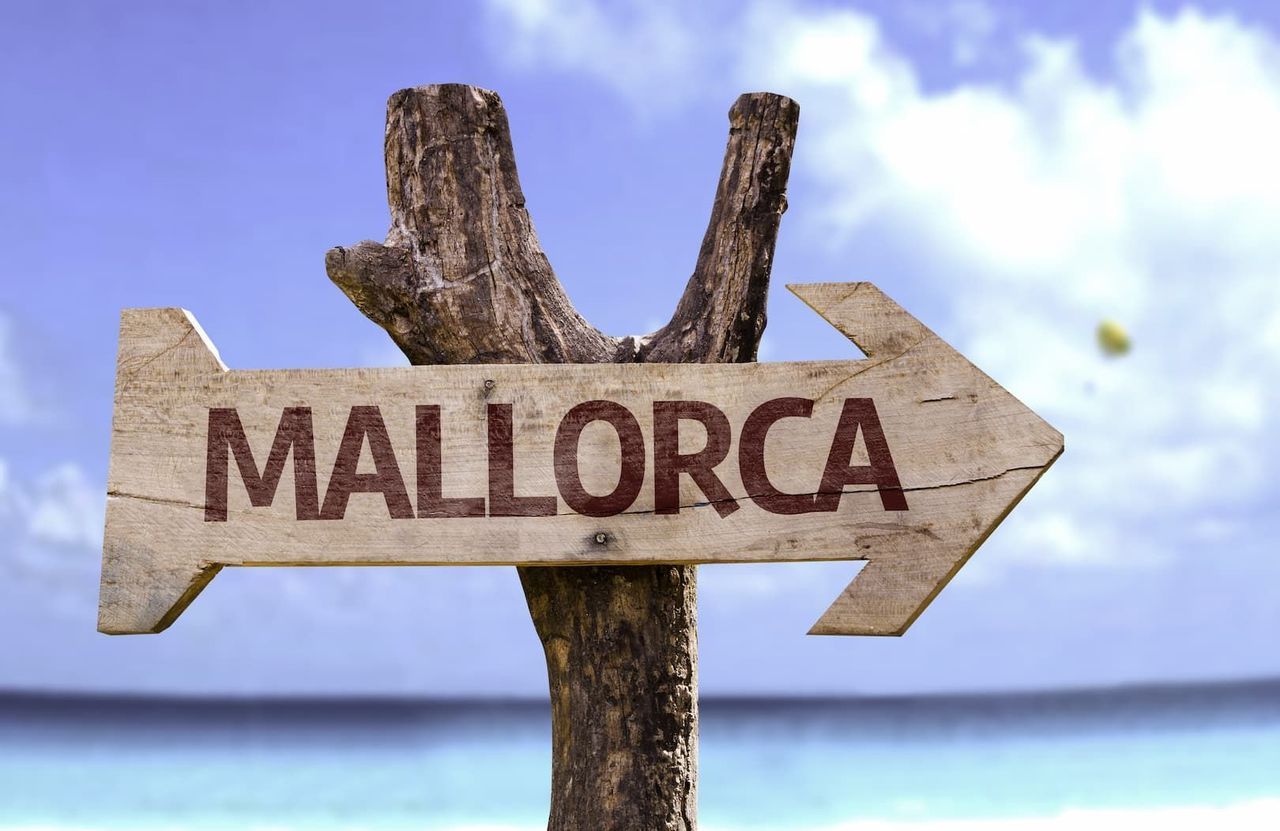

You have finally booked your flight, and you’re getting the pre-flight tingles with a generous side of panic. So where should we start? Which places should you visit in Tokyo? How to get around the city and what to see? Take a deep breath, set your mind straight and start reading my guide, to get you into the right mood.
Tokyo is a parallel universe composed of several solar systems, whose nucleus is represented by the neighbourhoods that sketch its city geography. The comparison seems risky but once you have tasted its very particular atmosphere you will certainly agree with me. Moving from one neighbourhood to another, the urban fabric and the sensations the city exudes change. Because Tokyo is innovation and tradition, but also a future and past that blend in a continuum whose contours are fuzzy. Tokyo is an oxymoron: crowded but silent. You’ll fall in love with it at first sight.
And then we start our trip to the capital of the Rising Sun, with an itinerary that will let you discover its most famous attractions, but also some lesser-known gems. Are you ready to go? Let’s start with Shibuya, the district many consider the centre of Tokyo, at least from the point of view of entertainment!
Shibuya, the youthful district
Think of Tokyo and imagine Shibuya. Because this district is precisely the one that identifies the best-known soul of the Japanese capital in the people’s minds. Lively, irreverent, colourful, packed with shops, neon lights, karaoke, pachinko and pubs. Shibuya is a concentration of trends and, for this reason, it is also one of the areas most frequented by Japanese youth. If you’re wondering which places are the best to visit in Tokyo, this is where you need to start. Needless to say, its greatest attraction is the incredible intersection: seeing it from above is an experience that leaves you speechless! I’ll tell you about it below, and then I’ll list the other things to see in this district.
Shibuya Crossing
Shibuya is the busiest intersection in the world. Traffic stops and when the pedestrian crossing turns green, hundreds of people pour into the street simultaneously.
To fully enjoy the scope of this urban show, take a look at it from above. This perspective reveals the spectacle best. You can take advantage of Starbucks’ windows (which sit on the corner at the intersection), but you will have to line up to grab the best seats; for 600 yen you can instead climb to the shopping centre’s terrace of the Magnet by Shibuya 109. If you have no budget problems, for 2000 yen you can reach the top of the Shibuya Sky, a skyscraper that definitely offers the best view of the area. The smarter ones, on the other hand, can take advantage of the pedestrian crossing at the JR Shibuya station, as long as you do not get lost in its intricate meanders!
Hachiko Statue
Emblematic of loyalty, affection and loyalty, Hachiko’s story has skipped over national boundaries to become world famous. Hachiko is the dog who waited for his master at Shibuya Station for ten long years, unaware of his untimely death. This Akita’s loyalty impressed public opinion so much that they dedicated a statue to the dog. Today, it is the destination of a real pilgrimage: located right in front of the metro station where young Japanese have met for years. A selfie is practically mandatory, so don’t forget to include this in your list of things to see in Tokyo!
Center Gai
It is the famous pedestrian street in Shibuya, where all kinds of shops and clubs are concentrated. Plan your visit after sunset, because the neon lights will give you an incredible show. Here you can go shopping and take a trip to karaoke (beloved throughout Japan!). You can also eat and drink in an izakaya (a typical Japanese pub). Then, if your ears can stand the noise, you can hop over to Pachinko. This game room as absurd as it is famous that is really raging in Japan!
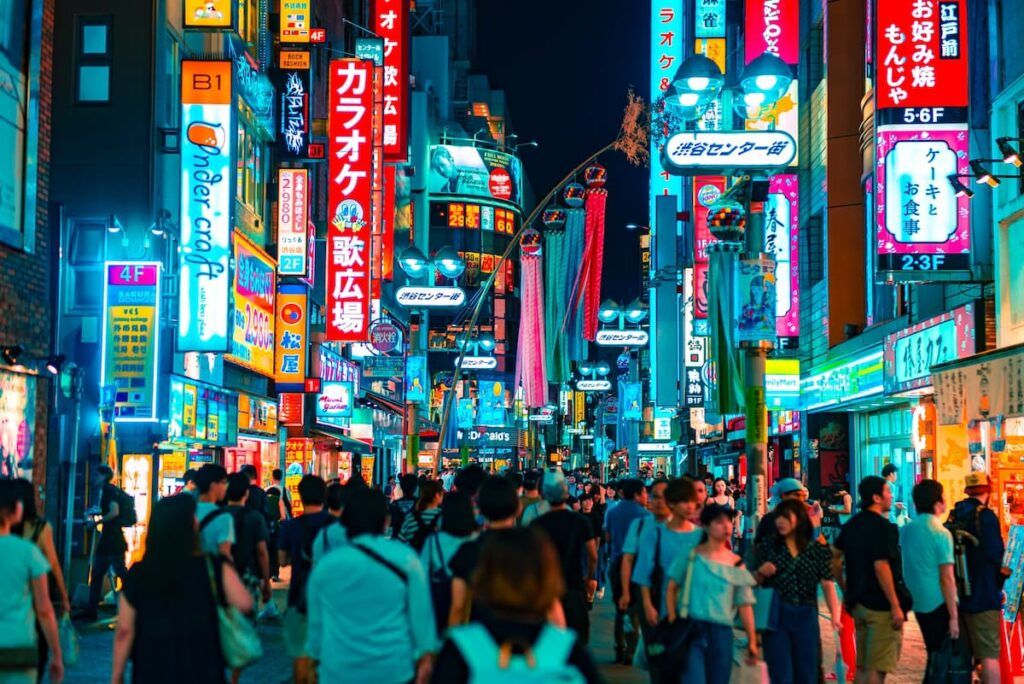
Shinjuku
If you successfully navigate the subway, one of the busiest in the world, Shinjuku will welcome you among its skyscrapers and countless attractions. In this part of Tokyo, there is a myriad of places to visit. For ex-pats who live in Japan, this is definitely the place to be. It is not as touristy as Shibuya, but it is just as busy. It represents a real glimpse of Japanese life. While walking through Shinjuku, you’ll see ladies strolling around with puppies in strollers. Additionally, you may come across hordes of clerks all dressed the same, in their iconic beige trenchcoats. And then get going immediately, because below you will find numerous places to visit in Tokyo and certainly the most iconic!
Tokyo Metropolitan Government Building
If you visit Shinjuku by day, there is a gleeful opportunity to climb to the top of the Tokyo Metropolitan Government Building, an administrative building composed of two twin towers. There are two observation decks here, where you can admire Tokyo from above. If you are lucky and the day is clear, you will have the opportunity to see the majesty of Mount Fuji from afar. It is truly wonderful. And there’s good news on the horizon: climbing to the top of the towers is free! If, for example, your budget doesn’t allow you to shell out the 3000 yen needed to climb to the top of the Tokyo Tower, the Tokyo Metropolitan Government Building is a valid alternative!

Golden Gai
If you spend the evening in Shinjuku, don’t miss the chance to visit the Golden Gai. It’s an intricate maze of streets overlooking over 200 tiny premises that can accommodate only a few guests at a time. It’s the perfect opportunity to treat yourself to a glass of Nihonshu (hot or cold) in total tranquillity. But please note: access to these places is not guaranteed! Even in city restaurants, some managers reserve the right to refuse service to foreigners. The gesture is unmistakable: an X formed with fingers, or in the most striking cases, with their arms!
Kabukicho
The aforementioned small Golden Gai district is located within Kabukicho, Shinjuku’s red-light district and is predominantly run by the Yakuza. Its entrance is marked by a large red sign. Here you will find nightclubs and clubs for adults, as well as many Pachinko halls. Despite the premises, it is not a dangerous neighbourhood. Just be wary of the classic doormen (which are usually not Japanese), who invite tourists inside the premises to introduce them to girls. Just decline politely and keep walking, discovering the district’s atmosphere. Among the things to see, there’s the huge Godzilla head that emerges from the top of the Hotel Gracery complex. If you want to watch a really unusual show, I recommend the Robot Restaurant, a real spectacle!
Omoide Yokocho
To conjure an image of Tokyo of yesteryear, there is nothing better than a trip to Omoide Yokocho, which literally means “memory lane”. Here you will find very narrow alleys overlooking small clubs and restaurants where you can buy local food. What would you like to try? Rest assured that you will not be disappointed. From yakitori to ramen, there are even tiny places to eat sushi. It will be an incredible experience because – in addition to eating the most authentic sushi you will ever experience – it will be prepared a few just centimetres from you, by very skilled hands. And remember – if you do not already know – that you should dip the fish, not the rice, in soy sauce!
Shinjuku Gyoen, the city park
When you’ve had your fill of annoying noises and neon lights, then Shinjuku Gyoen is where you should take a break. You’re in one of Tokyo’s largest parks, perfect for a stroll or sitting under a splendid tree. It’s beautiful, and rightly so: it used to belong to the royal family! It was only opened to the public in the 1950s and now it welcomes both Japanese who need a bit of respite from the metropolis and tourists who need some peace of mind. Perhaps I will state the obvious now: in spring this park turns into a wonderful and enchanted place. You can breathe the magic of Hanami, the spectacle of cherry blossoms.
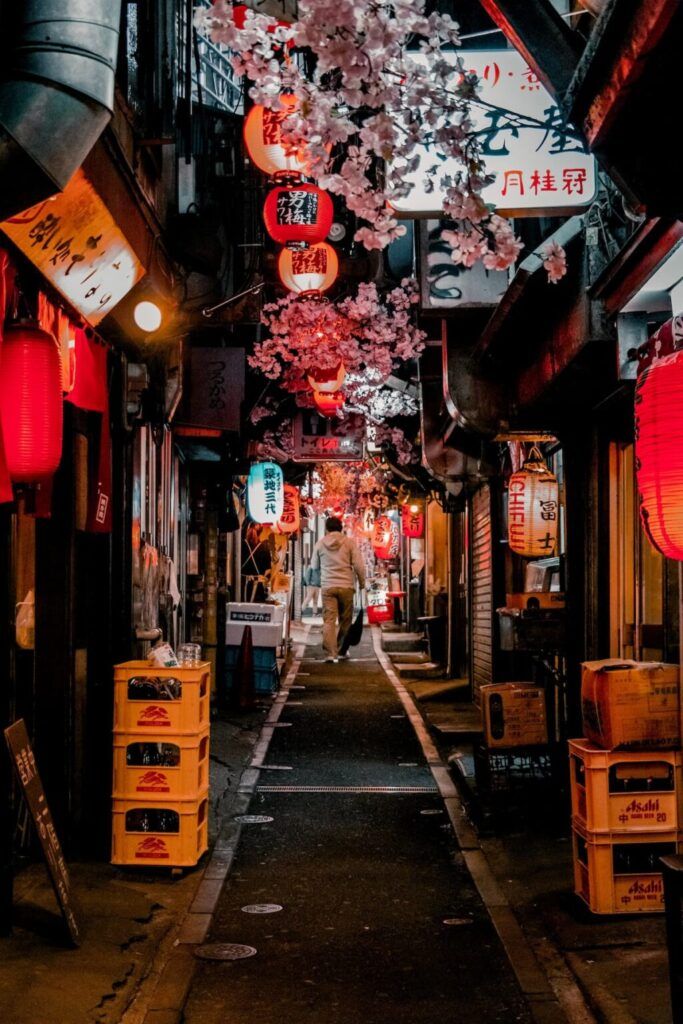
Asakusa, a dive into the past
Are you looking for a more traditional Tokyo? Head on over to Asakusa, where a different city from the one we all imagine still survives today. In the Japanese capital, spirituality coexists serenely alongside neon signs and skyscrapers. Explore this neighbourhood on foot, breathe in the time-suspended atmospheres it gives, and head to the Sensoji Buddhist temple, preceded by the Kaminarimon, a huge red door. You find yourself right at the entrance to Tokyo’s most famous, as well as one of its oldest temples. To reach it, you will have to follow a road called Nakamise, lined with countless characteristic shops where you can buy souvenirs. In addition to visiting the temple, for a small amount, you can test your fate, discovering what the future holds for you. This went terribly wrong for me, and you can find the photographic proof right below!
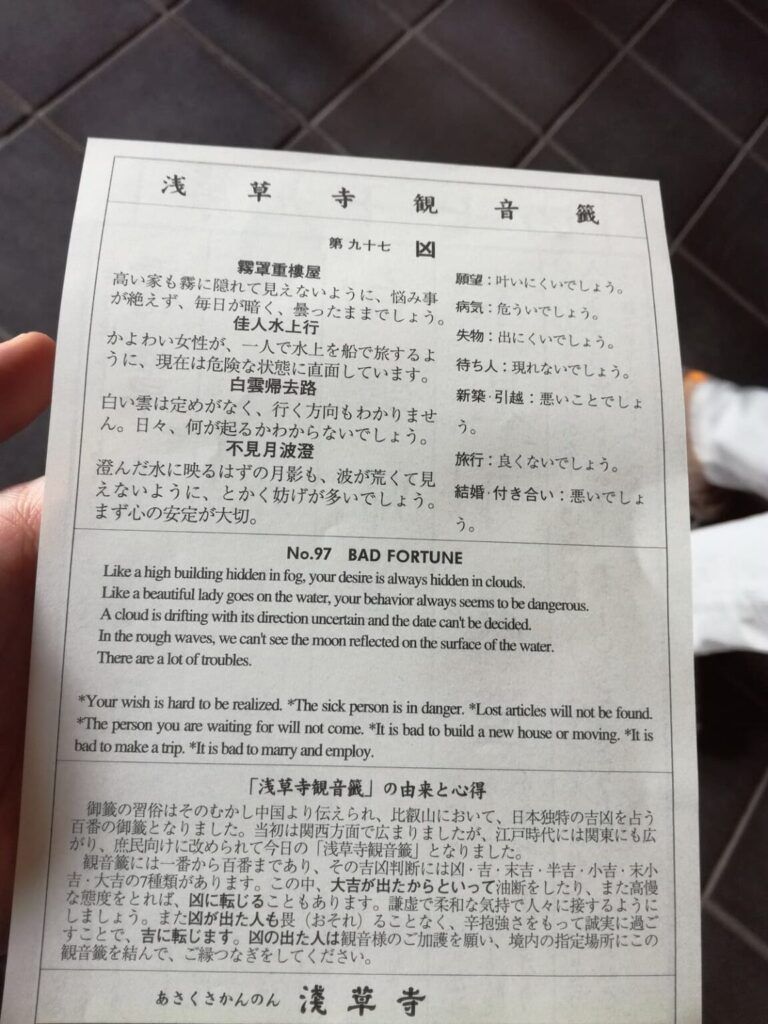
Ginza and Roppongi
Ginza and Roppongi are two quite extensive districts. I’ve grouped them together because they embody the city’s most modern as well as its most artificial soul. Ginza is a very wealthy neighbourhood, as well as one of the most expensive places in the world to live. It is no coincidence that all the major international fashion brands are concentrated here. From Louis Vuitton to Gucci, the atmosphere is decidedly spangly. And for this reason, the city’s geography is also changing, offering real architectural jewels.
This district’s symbolic building is the one that houses the clock tower. It is located at the top of Wako, a huge shop that sells luxury objects and jewellery. Personally, this area of Tokyo impressed me the least, because it is perhaps the most western. Those who want to deepen the city’s cultural life can take a trip to the Kabuki-za theatre in Ginza, the most famous theatre in Tokyo.
On the other hand, in Roppongi, the aesthetics of the buildings change: the appearance is less glossy but still modern. Here the city’s nightlife is more concentrated. Taking a break in the evening will let you discover many clubs and discos, which are frequented mostly by foreigners and Westerners. In fact, in recent years the neighbourhood has been redeveloping to become one of the city’s cultural centres. It is no coincidence that a large number of museums and art galleries are concentrated here. If this is your tipple, you can take a trip to the National Art Center, the Mori Art Museum and the Suntory Museum of Art.
Tokyo Tower
But the real attraction of Roppongi is the Tokyo Tower: 333 metres tall, it looks like “our” Eiffel Tower. Until a few years ago, it was the tallest structure in the city, recently surpassed by the Tokyo Sky Tree, 634 metres tall! Despite losing its record, climbing to the top is really a breathtaking experience. There are actually two observation decks, and they have different costs. To reach the first you will have to fork out 1200 yen. On the other hand, if you want to reach the second one – at 250 metres – the price is 3000 yen. For many, it is pointless reaching the highest, because the first observatory is more than enough to observe the panorama and the city skyline. Definitely one of the places to visit in Tokyo!
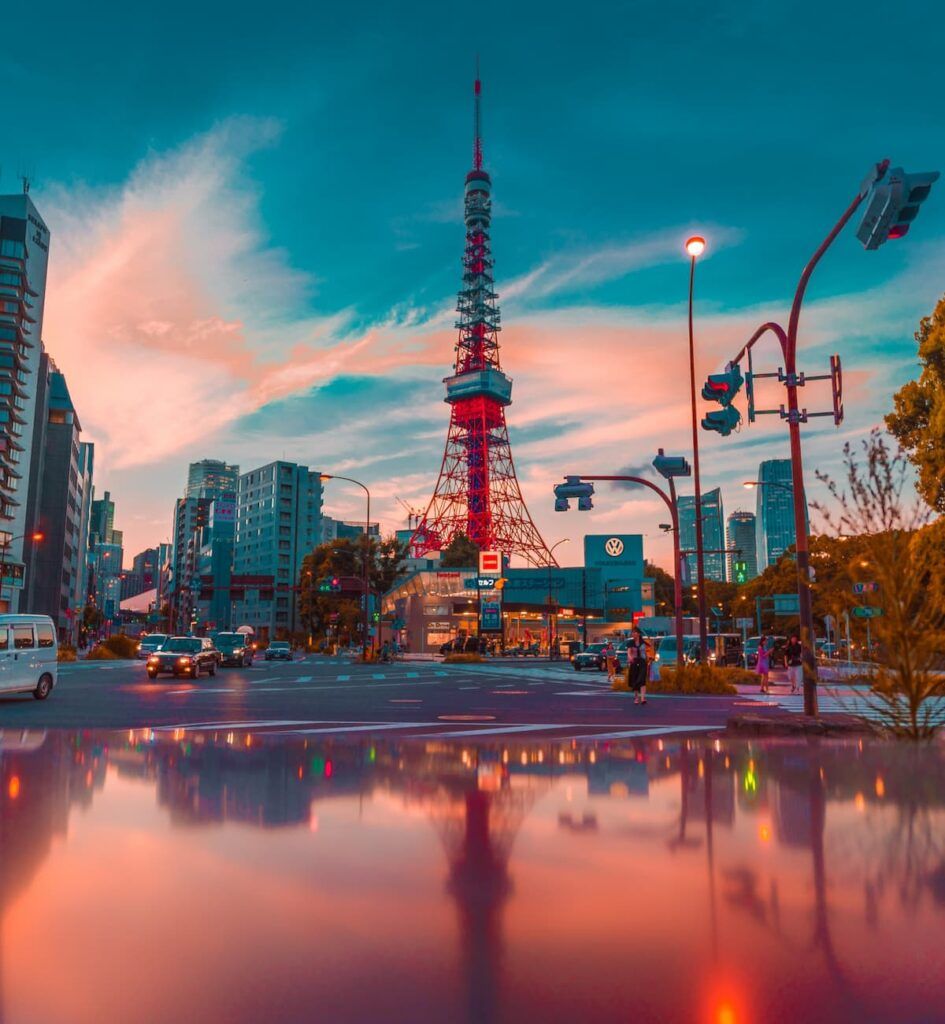
Harajuku, the cosplayer district
Which really special places should you visit in Tokyo? Simple, Harajuku, the district of youth subcultures with manga and the most bizarre fashions. Takeshita Dori is an essential stop because it represents this city district’s symbol. It is a road of about 400 metres with a concentration of an unimaginable amount of shops and cafes that, during the weekend, are stormed by Japanese teenagers and not only.
During the weekend, it is also not uncommon to come across cosplayers, or people who disguise themselves (with ruthless devotion!) as the characters of their favourite manga or anime. What if you want peace of mind amid all this chaos? Don’t worry, it’s just a few steps to reach Meiji Jingu, a wonderful Shinto shrine.
Meiji Jingu
Welcome to one of the most sacred places in the Japanese capital, as well as an immense oasis of peace and tranquillity. Once inside the Meiji Jingu, you won’t even feel like you’re within walking distance of the busy Harajuku Station! We are in a shrine dedicated to the souls of Emperor Mutsuhito and his wife, Empress Shōken. Both played a crucial role in the history of Japan because they transitioned their country into the modern era after the end of the very long Edo period.
Immersed in the magnificent Yoyogi Park, the shrine’s entrance is indicated by the presence of a large Torii, the classic Shinto red door. You will find several buildings inside: the central one, dedicated to prayer, and other small sacred structures. These including a museum where the imperial couple’s items are preserved. Do not miss the private gardens, whose entrance bears a small fee. If you visit Tokyo in June do not skip them, because the irises’ bloom is really incredible!
Akihabara, the capital of Kawaii
For many, Japan is synonymous with technology and video games, and for others with anime and manga. Therefore, nobody is surprised that these two aspects coexist, side by side in one of the most bizarre neighbourhoods in all of Tokyo: Akihabara. Here, at the end of huge shops dedicated to electronics, you will find endless shops where manga and comics stand out, obviously surrounded by themed cafes, definitely kawaii.
If you are passionate about technology, when you are in Tokyo you will absolutely have to see Yodobashi Camera, where you will find anything you could want. If, on the other hand, your passion is manga and anime, do not skip Radio Kaikan, one of the most iconic Akihabara palaces. The eight floors of the store explode with manga, action figures (both new and used) and video games. Some pieces are from super collectors, so you will surely have your work cut out for you. If you haven’t had enough, check out Mandarake, a huge store specialising in the second-hand manga.
But if you want to spend a day as a real Otaku, a term that (in a very simplistic way) identifies fans of manga and anime, give yourself a few hours in a maid cafe‘. These are special clubs where the waitresses are dressed as British and French rulers. If you are not tired and want to discover other places to visit in Tokyo and, in particular, in Akihabara, I point out the Taito Game Station. It’s packed with Japanese people playing video games, or Don Quixote, a huge labyrinthine store where you can literally find anything: I do not know if you will ever get out!
Odaiba, Ueno and Kanda
Okay, I get that I’ve already written a lot! But there are still a lot of other neighbourhoods missing! For brevity’s sake, I will group the last three districts: Odaiba, Ueno and Kanda. Surely they all deserve a visit, but the need to capture all the places to visit in Tokyo requires me to be a little briefer. Here are the attractions of these magnificent districts, one of which is even on the sea!
Odaiba
It is one of the newest neighbourhoods, a destination for anyone who wants to have fun or go shopping. It overlooks the sea and has risen on an artificial island in Tokyo Bay. Take a stroll through one of the shopping malls until you reach the DiverCity Tokyo Plaza complex, where you can admire a life-size statue of the Gundam Unicorn RX-0. It stands almost 20 metres tall and is the true symbol of Odaiba. In the evening, it is very nice to admire the illuminated Rainbow Bridge or the bridge that connects this district to the rest of Tokyo.
Kanda and the Imperial Palace
It is not a place very frequented by tourists, because it is mostly a residential area, as well as a place where numerous city universities and institutional buildings are located. This part of the city houses the Imperial Palace of Tokyo, where the Emperor of Japan and his family reside. Visiting Tokyo obviously means taking a look at it, even just summarily. Many are content to admire it from the outside, especially in the area where the bridge that connects the interior with the exterior stands. The palace is not open to the public and only a part of the gardens are allowed, exclusively in the morning, with visitors following a guided tour.
Ueno
If you want to make a stop in the quieter and more relaxed Tokyo, head on over to Ueno. This neighbourhood develops around the homonymous park. Here nature rules, along with some historical and spiritual buildings that were once part of the huge sacred complex of Kaneiji. And if you want to end the day in beauty, stroll on over to the Shinobazu Pond, where you can rent a swan-shaped pedalo and take a nice ride on the water, enjoying the backdrop of the city skyscrapers. Obviously, this part of Tokyo is stunning in spring, when the cherry blossom petals float on the water.
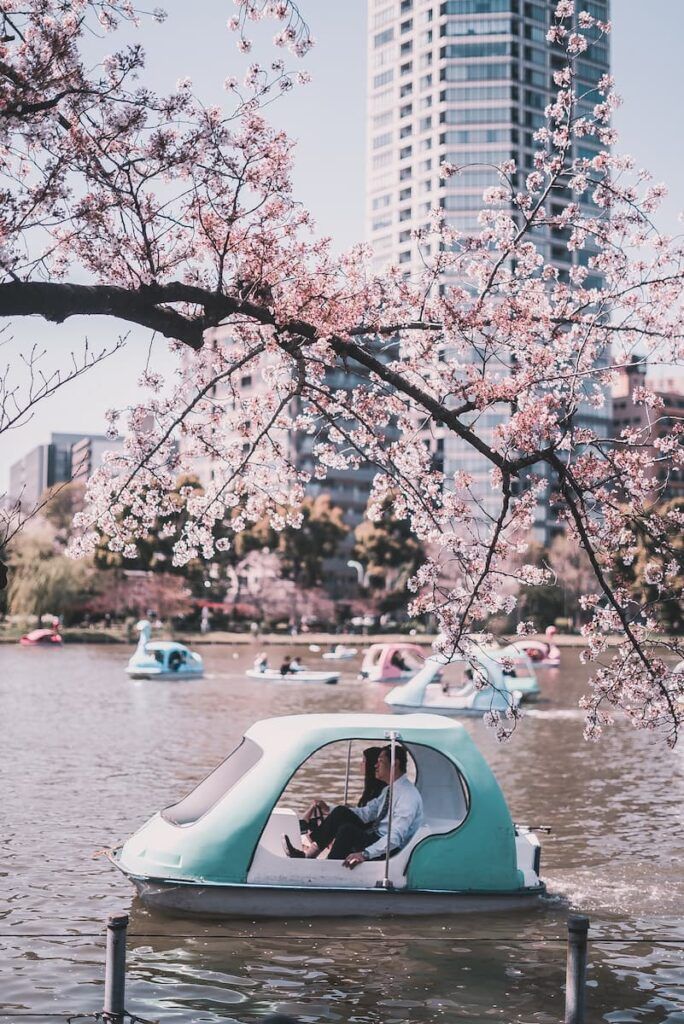
How to get around Tokyo
After wondering which places to visit in Tokyo, you should then ask yourself how to get around the city! Taking public transport will make you feel like taking a trip within a journey. With the metro, you get everywhere, but it is not so easy to use. Get ready, because you will definitely get lost, especially in Tokyo Station!
Being also quite expensive, I advise you to plan your days so that you know exactly where you need to go. The first thing to know is that the transport system is run by different companies. In general, you just need to use the JR and Tokyo Metro, which can get you practically anywhere. Tickets also change based on the trains you use, so make no mistake or you will have wasted a precious ticket.
And now a little treat. If you have travelled far and wide to Japan using the Japan Rail Pass, you should know that this subscription is also valid on the Yamanote Line and can be used totally free of charge! Simply show your pass to the turnstile attendants and they will let you through without delay.
In general, to get around, I recommend using Google Maps, because it tells you exactly which means to take to reach your destination. Before leaving, book a Pocket WiFi, a small portable “router” that will provide you with a constant internet connection. Trust me, it’s a lifesaver! By booking it earlier, you can pick it up directly at the airport upon your arrival. Convenient, right?
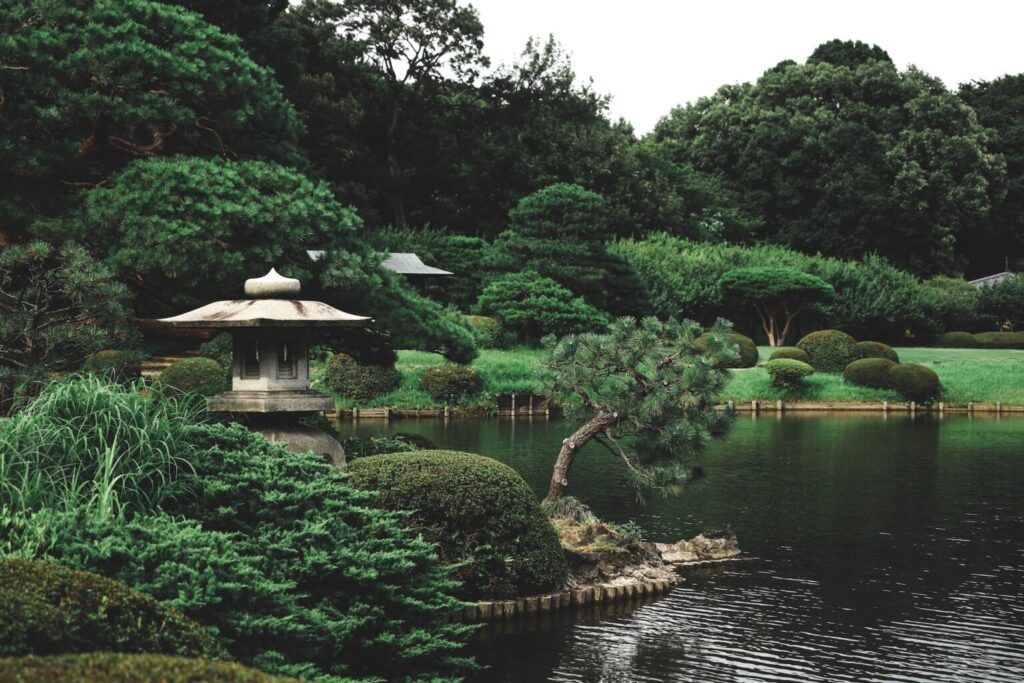
Eating in Tokyo
At this point, you know all the places you need to visit, but what are the typical dishes of Tokyo? The city can satisfy any culinary desire, even the strangest! Obviously, you will have to try sushi, it is nothing like the Western one, too rich and “messed up”. But Tokyo and Japan are not just raw fish. Here’s what to eat:
- Ramen – Among the typical dishes of Japan, it is noodles in broth with vegetables, algae and eggs. And don’t worry, you can make all the noise you want while eating. You’re communicating to the host that you really like what you have on your plate!
- Okonomiyaki – It is a typical dish of Hiroshima, but it is also popular in Tokyo. It is a kind of omelette cooked on the grill, where you can add vegetables and ingredients of your choice, both seafood and meat. Truly sublime!
- Takoyaki: They are tasty battered octopus meatballs seasoned with a sauce that will make you lick your chops! They are served in restaurants and as street food.
- Taiyaki – The typical Japanese desserts are not very sweet, but really good! One of these is the Taiyaki, shaped like a fish and filled with anko, a jam made of red beans (azuki). I have devoured a lot of them: they are also street food, especially in stalls in the various city parks.
- Dango: here’s another street food that I fell in love with. These are stacked up rice flour dumplings. They are really cheap (about 150 yen) and are a real treat, but only if you like the slightly sticky texture.
In general, I advise you to try everything you encounter. The Japanese cuisine is sublime. Trust me, it is nothing like what is usually served back home.
Travel to Tokyo with WeRoad
Now that you know the places to visit in Tokyo, set off for Japan! The trip will be dense, but definitely unforgettable! With Japan Express, WeRoad takes you to Kyoto and Tokyo directly aboard the Shinkansen, the punctual (and renowned) high-speed bullet train. You will discover the most famous city attractions, eat sublime dishes and fall in love with a completely different culture. And you will learn to appreciate this so beautiful and, at times, incomprehensible country.
If you want to find out what to see in Japan, don’t miss our article!
Frequently Asked Questions: Visiting Tokyo
What are the must-visit districts in Tokyo?
For a complete experience of Tokyo’s diversity, consider visiting these key districts:
- Shibuya: Famous for its iconic scramble crossing and vibrant youth culture.
- Shinjuku: A mix of serene gardens, skyscrapers with panoramic views, and lively nightlife.
- Asakusa: The heart of traditional Tokyo, home to ancient temples and markets.
- Akihabara: The epicenter of electronics, anime, and manga culture.
- Harajuku: Known for its quirky street fashion, themed cafes, and a major shrine.
- Ginza: The premier district for luxury shopping, art galleries, and fine dining.
What is Shibuya best known for?
Shibuya is world-famous for several key attractions:
- The Shibuya Scramble Crossing, one of the busiest intersections in the world.
- The loyal Hachiko dog statue, a popular meeting spot.
- Its role as a trend-setting hub for fashion and music.
- A vibrant and energetic nightlife scene.
What are the top things to do in Shinjuku?
Shinjuku offers a wide range of activities. Highlights include:
- Relaxing in the Shinjuku Gyoen National Garden, a beautiful and peaceful oasis.
- Enjoying free panoramic views of the city from the observation decks of the Tokyo Metropolitan Government Building.
- Experiencing the unique nightlife in Golden Gai, an area with tiny, atmospheric bars.
Where can I experience traditional Tokyo?
The Asakusa district is the best place to experience the atmosphere of old Tokyo. Key sights include:
- The Senso-ji Temple, Tokyo’s oldest and most significant Buddhist temple.
- Nakamise-dori, the bustling market street leading to the temple, perfect for buying traditional snacks and souvenirs.
Which district is best for anime and gaming fans?
Akihabara, also known as “Electric Town,” is the ultimate destination for fans of Japanese pop culture. It is packed with stores selling electronics, anime, manga, and video games, as well as unique themed cafes.
What are the main attractions in Harajuku?
Harajuku is a hub of youth culture and fashion. The top attractions are:
- Takeshita Street: A vibrant, narrow street lined with quirky fashion boutiques, crepe stands, and themed cafes.
- Meiji Jingu Shrine: A peaceful and majestic Shinto shrine dedicated to Emperor Meiji and Empress Shoken, located in a serene forest.
Where should I go for luxury shopping in Tokyo?
The Ginza district is Tokyo’s most famous upscale area. It is renowned for its high-end department stores, designer boutiques, art galleries, and sophisticated dining options.
Are there any important temples or shrines I should visit?
Yes, two of the most significant religious sites in Tokyo are:
- Senso-ji Temple in Asakusa, an ancient and vibrant Buddhist temple.
- Meiji Jingu Shrine near Harajuku, a major Shinto shrine dedicated to the deified spirits of Emperor Meiji and his wife.


